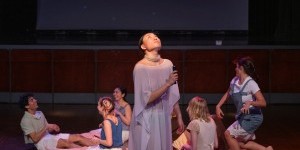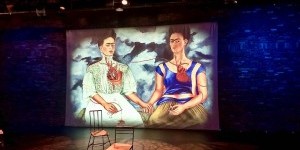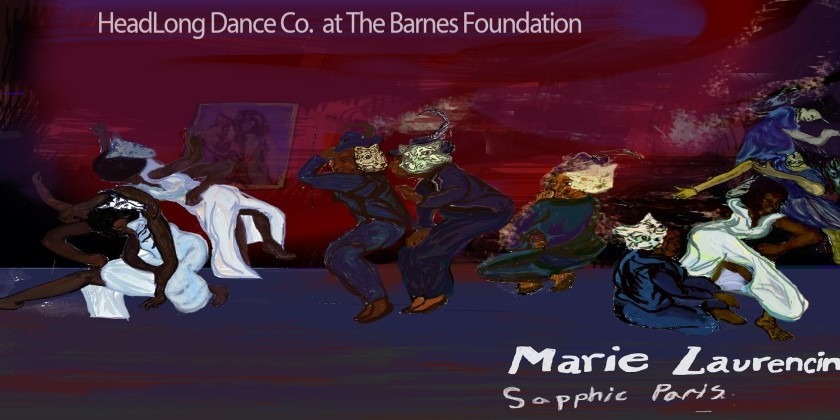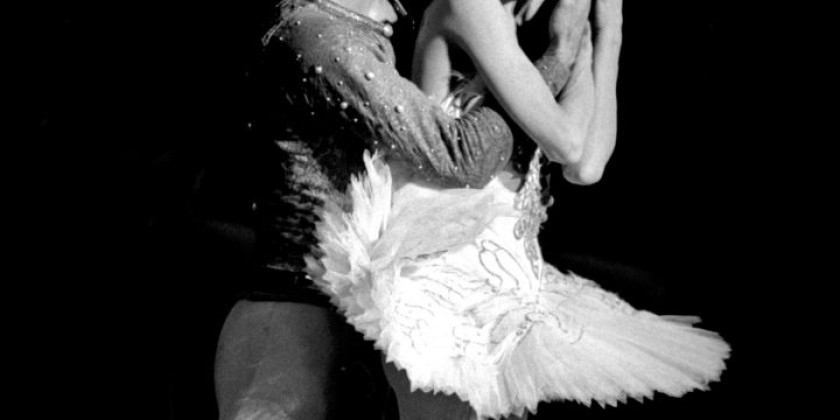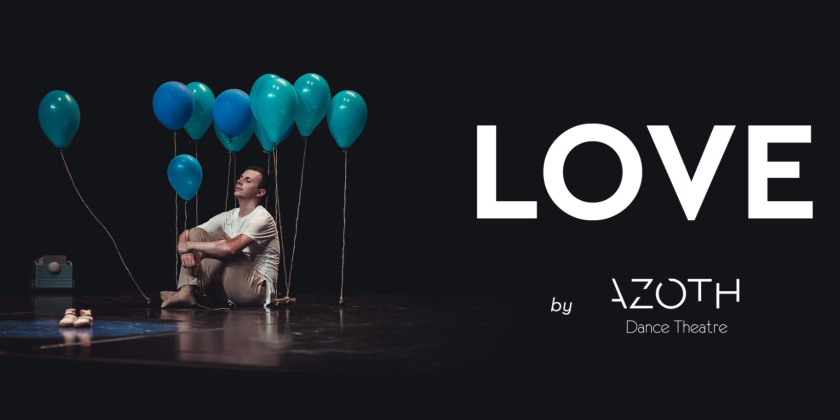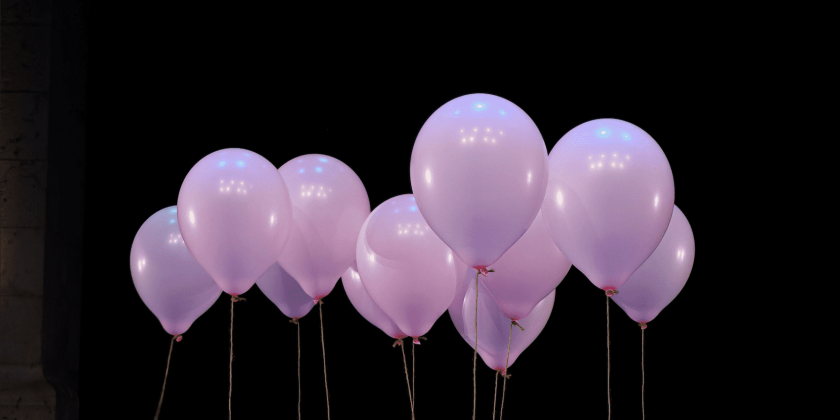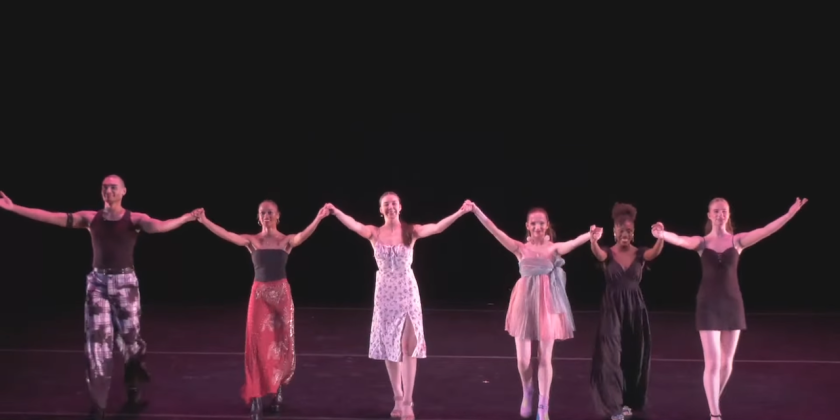AUDIENCE REVIEW: TUNING into j.garcia dance company
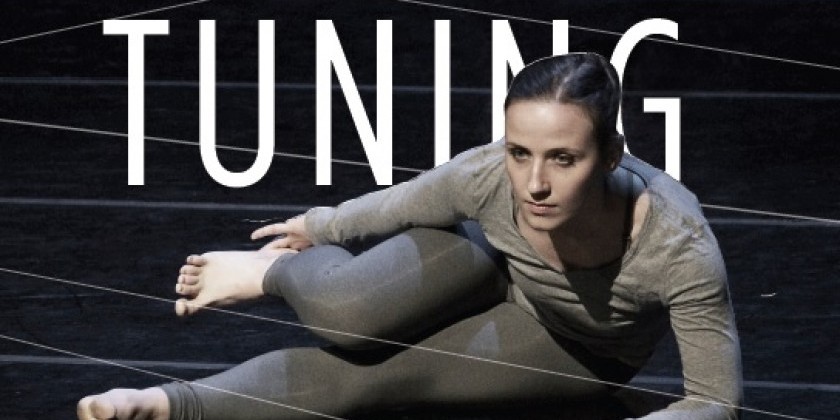
Company:
j.garcía dance company -- Albuquerque, New Mexico
Performance Date:
February 6 and 7, 2015
Freeform Review:
by Sarah Williams
Photo Credit: Kelsey Paschich
What does it mean to tune? If the sound transmitted through a radio is fuzzy, it means turning a knob. If the strings of a piano or guitar are out of tune, they can be tightened in order to play the proper notes. What value does the concept of “tuning” have in everyday life? Can human beings be tuned regarding how we communicate and interact in our relationships? How do we tune ourselves?
These are central questions explored within TUNING. With this work, the j.garcia dance company, led by artistic director Jacqueline M. Garcia, enters the professional scene of contemporary dance theater in Albuquerque. The performance begins in an abyss of darkness, from which blue light illuminates the figures of Sonia Bologa and Lisa Nevada. Each of the six dancers in the piece has a unique gesture and accompanying movement quality that they repeat. Nevada, for example, employs a listening motif in which she places both hands near her ears, fingers extended,indicating that she is deeply engaged inconnecting with the sounds around her. A scantily clad Bologa rolls her shoulders and rib cage in slow circles. She gingerly rubs her thumbs against her four enclosed fingers, as if feeling an identifiable texture. She shifts between sharp and smooth movements as Nevada balances on one foot behind her. Nevada exits the stage. Bologa is left alone, swiftly changing levels in space, shifting weight, and finding balance in positions that are off-center, yet inevitably returning to her initial starting point of parallel legs with arms at her side.
Bologa is eventually joined on stage by company members Esteban E. Garza, Ana Mercedes Arechiga Gonzalez, Kaitlin Innis, Elysia Pope, and Nevada. The dancers are wearing gray shirts and black pants, with the exception of Bologa, who has covered herself in a black shirt. The dancers move with minimal facial expressions throughout the entirety of the work, deep in contemplation. At rare moments, they make eye contact with one another. The piece explores relationships as each dancer embarks on a movement monologue. The dancers begin their solos on a blank stage, moving in a calm manner. The gestures and movements in the solos gain speed and become frantic as other dancers enter and mimic their gestures. When the others leave the stage, the soloist returns to equilibrium.
Garcia’s movement vocabulary for TUNING pulls from a variety of sources. She creates a fusion of modern dance, ballet, and a gestural language while reverently nodding to Trisha Brown’s “Accumulation” and the angst-riddled roars of Robert Battle.
The sound in TUNING is a series of five tracks, combining the work of Phill Niblock, Nils Frahm, and If, Bwana. These avant-garde composers accompany TUNING with what sounds like a singular, long note that lasts for the majority of the hour-long performance. With the use of the monotonous sound, Garcia was forced to rely on her dancers. According to Nevada, “By building in percussive patterns, Jacqueline Garcia has created moments where the group has to work together in order to provide its own guidance and internal rhythm.”
About thirty minutes into TUNING, the sound score ceases to play. True to John Cage’s claim that silence does not exist, the absence of music allows for the presence of a vocal breath. The culmination of TUNING occurs when a narrative immerges from this abstract dance. Bologa enters the stage and strips down to her unmentionables. Garza follows in her footsteps, eventually removing his clothing as well. The two engage in a conversation of rapidly occurring inhales and exhales, their gazes locked. They move downstage left and stand side by side, no longer looking in each other’s eyes or facing straight on. The two breathe more heavily, panting as the level of sexual tension rises to a climax. The scene is immediately followed by Nevada, Innis, and Pope flocking around the stage. The trio uses heavy, large movements, erupting with loud vocal outcries.
Dancer Ana Mercedes Arechiga Gonzalez states, “TUNING has provided an opportunity for the company and company members to liberate themselves and bring new life into our artistry.” Jacqueline M. Garcia and the j.garcia dance company have developed a concert that allows each dancer to explore their own rhythm, movement aesthetic, and sense of time. Therefore, each audience member is invited to enter into this world and asked to develop their own understanding of “tuning” as applied to these dancers and themselves.
TUNING is being presented at N4th Theater (4th St. NW, Albuquerque, NM 87107) on Friday, February 6th at 7:30 pm and Saturday, February 7th at both 2:00 and 7:30 pm. Admission is by donation at the door. For more information, visit www.jgarciadance.com or email jgarciadance@gmail.com.






